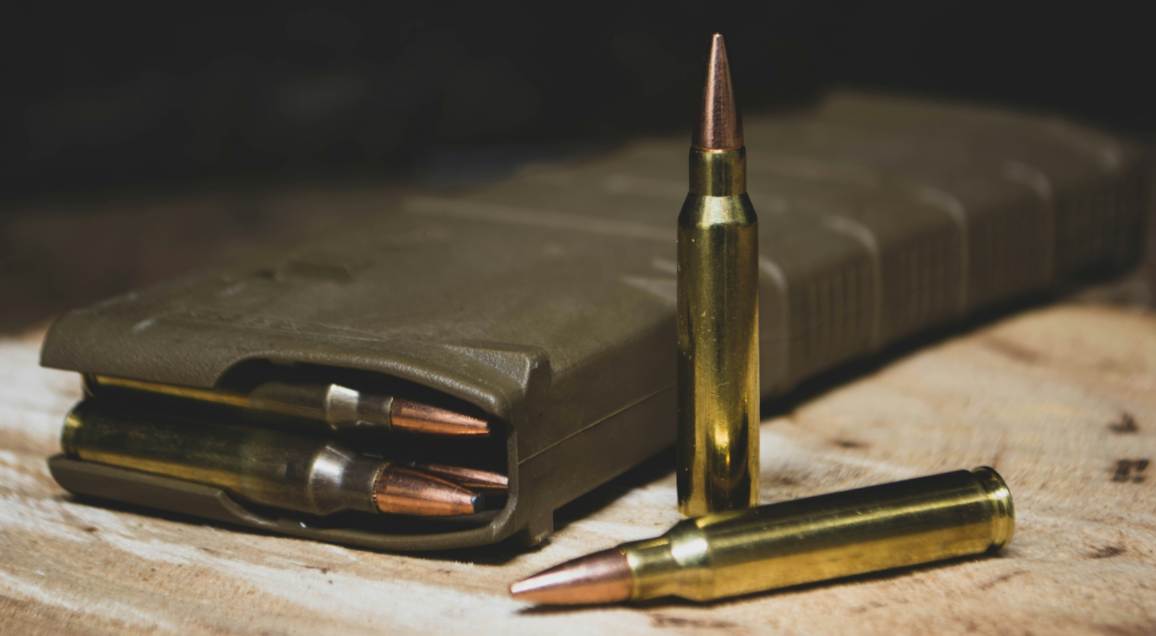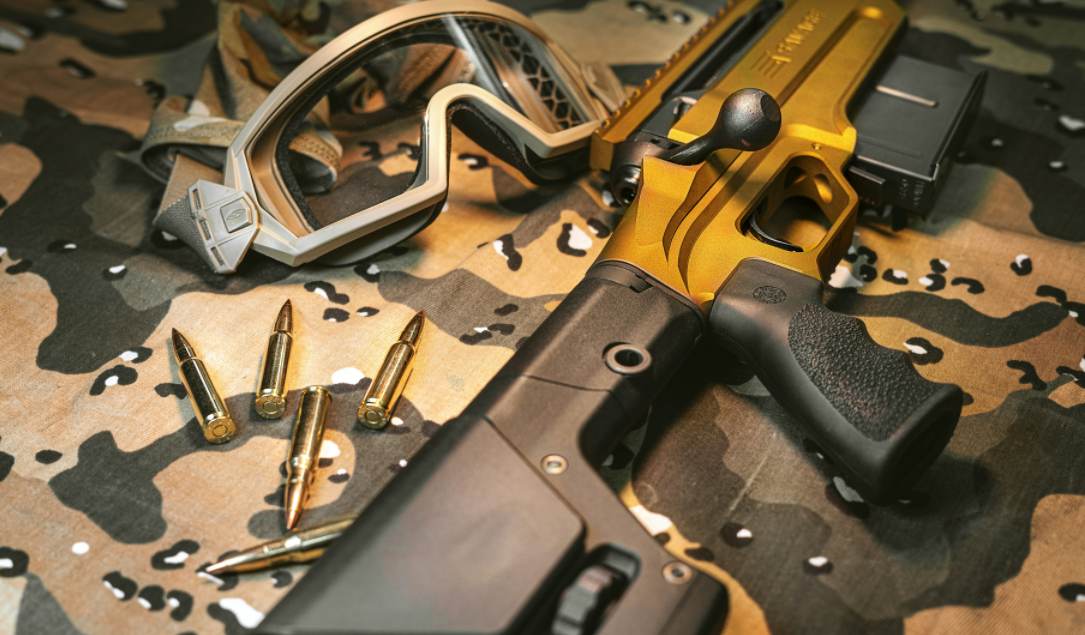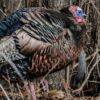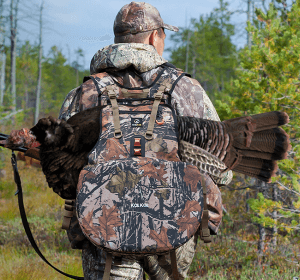Have you ever dreamed of a successful deer hunt but are not sure if you can hunt deer with 223? You’re not alone. Sporting bias ensures that the kill is fast hence the animal suffers less. Despite this, this blog seeks to explain the efficiency of the. 223 caliber for deer hunting, a look at bullets, effectiveness, and ethics of hunting.
We will then contrast it with other conventional calibers and look at the available ammunition for your AR-15. We will also look at whether the. 223 is truly suitable and looks into the possibilities of employing pistols or BB guns in deer hunting.
Last but not least, we will suggest appropriate calibers for humane kills.
Is a 223 Good For Deer Hunting?
While you can technically hunt deer with 223 bullets, it’s not an ideal choice for ethical hunting.
The .223 is primarily a varmint cartridge, designed for taking down small animals like coyotes or prairie dogs. It fires lightweight bullets (typically around 55 grains) at high velocities (around 3,200 feet per second).
This combination is great for varmint hunting, where explosive bullet performance is desired to dispatch small animals quickly. However, it translates to less-than-ideal performance on larger games like deer.
Here’s a breakdown of the .223 bullets for deer hunting:
- Bullet Type: Typically lightweight varmint bullets (around 55 grains).
- Speed/Muzzle Velocity: High (around 3,200 feet per second).
- Energy: Lower than ideal for deer (around 1,200 foot-pounds).
- Penetration Ability: Less than ideal for large deer.
- Accuracy and Recoil: Generally good accuracy, low recoil.
- Effective Range: Limited (generally under 100 yards for ethical hunting).
Why Is It Not Ideal to Hunt Deer With 223?
1. Lower power
The .223 cartridge is primarily designed for varmint hunting, and its bullets may not deliver enough energy to ensure a quick and humane kill on deer, especially on larger deer species like elk or mule deer.
Even for whitetail deer, which are smaller, a poorly placed shot with a .223 could result in the animal suffering for an extended period before expiring.
This is because the bullet may not transfer enough energy to disrupt the central nervous system or cause massive organ damage, leading to a slow and painful death.
2. Poor bullet performance
Lightweight varmint bullets designed for the .223 are typically constructed to fragment on impact, expanding rapidly to create large wounds on small animals like prairie dogs or coyotes. This bullet construction is not ideal for deer hunting.
While fragmentation can be effective for varmints, it can also cause less tissue damage on larger animals like deer. The bullet may fragment prematurely on impact with bone or muscle, failing to penetrate deeply enough to reach the vital organs.
This can lead to a wounded animal that escapes and suffers a lingering death.
3. Shot placement is critical
Due to the lower power and bullet performance limitations of the .223, shot placement is critical for an ethical kill on a deer. A perfectly broadside shot to the vitals is essential for a quick kill.
Shots to the periphery, such as the legs or shoulders, are much less likely to be effective with a .223. The bullet may not have enough energy to penetrate deeply enough to reach the vital organs, or it may fragment prematurely, causing non-lethal injuries.
What Distance Is Best To Shoot With a .223 Bullet?
The best shooting distance will depend on your activities.
For hunting:
- Ideally, 100 yards or less: While the .223 can be effective at longer ranges, it’s generally recommended to keep shots within 100 yards for ethical and practical reasons. This ensures sufficient energy for a clean kill and better accuracy.
For target shooting:
- Depends on your skill and goals: The .223 can be accurate at distances well beyond 100 yards, with some shooters achieving impressive results at 300 yards or more. Factors like bullet weight, barrel length, and atmospheric conditions will affect the maximum effective range.
Best .223 Ammo for Deer
Federal Premium Fusion Rifle 223 Rem 62 Grain
Federal Premium Fusion Rifle 223 Remington 62 Grain is specifically designed for hunting applications. It features a bonded bullet construction, engineered to deliver consistent expansion and deep penetration upon impact.
The 62-grain bullet weight provides a suitable balance of energy and weight retention for a deer-sized game, ensuring reliable performance in the field. The Fusion line is renowned for its accuracy and terminal ballistics, making it a popular choice among hunters seeking a versatile .223 Remington cartridge.
Winchester 223 Remington
Winchester is a well-known ammunition brand with a reputation for quality and consistency. One popular option is the Winchester Deer Season XP 64 Grain. This load features an Extreme Point (XP) bullet designed for maximum expansion and energy transfer upon impact.
The 64-grain bullet weight provides increased penetration and retained weight compared to lighter .223 bullets, making it a suitable choice for a deer-sized game. Winchester’s Deer Season XP is known for its reliable performance and consistent accuracy, making it a solid choice for hunters seeking a dedicated .223 Remington deer cartridge.
5.56 Vs .223 Which Is Better For Hunting?
The 5.56 NATO cartridge is a military-grade round designed for rifles like the AR-15 platform. It’s characterized by higher chamber pressures and slightly different dimensions compared to the .223 Remington. This often results in higher velocities and energy levels for the 5.56 NATO round.
The .223 Remington is a civilian cartridge designed for hunting and target shooting. It’s generally lower pressure than the 5.56 NATO and is suitable for a wider range of firearms.
Is 5.56 Good for Deer Hunting?
While both the .223 Remington and 5.56 NATO can be used for deer hunting with careful shot placement and the right ammunition, they are generally considered underpowered for this purpose. Larger calibers like .243 Winchester or .308 Winchester are more commonly preferred for deer hunting due to their higher energy levels and better penetration.
.223 Vs .243 Which Is Better?
The .223 Remington and .243 Winchester are popular choices for a variety of shooting applications. The .223 is a smaller, lighter cartridge known for its low recoil, making it a great option for new shooters or those seeking a mild shooting experience.
It excels in varmint hunting, target shooting, and tactical applications. However, its limitations become apparent when hunting larger game due to its lower energy levels.
The .243 Winchester offers a significant step up in power compared to the .223. It delivers more energy and has a flatter trajectory, making it suitable for a wider range of game, including deer and medium-sized predators.
While recoil is manageable, it’s noticeably greater than the .223. The .243 is a versatile cartridge that balances power, accuracy, and recoil, making it a popular choice for many hunters and target shooters.
.223 Vs .308 Which Is Better?
The .223 Remington and .308 Winchester represent different ends of the spectrum in terms of power and recoil. The .223, as previously mentioned, is a lightweight cartridge with mild recoil, suitable for smaller game and target shooting. It excels in terms of cost-effectiveness and ammunition availability.
The .308 Winchester is a powerful cartridge known for its versatility. It can handle a wide range of game, from deer to larger animals, and is capable of long-range accuracy.
However, it comes with significantly more recoil than the .223, which may be a factor for some shooters. The .308 is a popular choice for hunting, target shooting, and tactical applications where stopping power is a priority.

Can You Deer Hunt With an AR-15?
Yes, you can deer hunt with an AR-15. While it’s not the traditional choice, many hunters successfully use AR-15s for deer. The key is to use the right ammunition, understand the limitations of the cartridge, and practice good shot placement.
Be mindful of the limitations of the cartridge you use. A poorly placed shot can lead to a wounded animal. Last, make sure to check your local hunting regulations to ensure an AR-15 is legal for deer hunting in your area.
To maximize your chances of a clean kill, opt for heavier-grain bullets designed for hunting. Look for options like:
- 62-grain soft point or bonded bullets: These offer better penetration and energy transfer compared to lighter varmint bullets, making them more suitable for deer hunting. Soft point bullets expand upon impact, creating a larger wound channel and increasing the likelihood of a quick kill. Bonded bullets retain their weight better, ensuring deeper penetration and a higher chance of reaching vital organs.
- 70-grain bullets: While less common, some manufacturers offer 70-grain .223 Remington bullets. These heavier bullets can provide even better performance on deer, offering increased penetration and energy transfer. However, they may not cycle reliably in all AR-15s, so it’s essential to test different brands and loads to find a combination that works for your rifle.
Can a 9mm Kill a Deer?
While a 9mm pistol can technically kill a deer with a well-placed shot, it is generally not considered a suitable caliber for deer hunting.
The 9mm lacks the necessary stopping power to reliably bring down a large animal like a deer. A humane kill requires sufficient energy transfer to cause immediate incapacitation.
While it’s possible to kill a deer with a 9mm, the chances of a clean kill are significantly lower compared to larger caliber firearms designed for hunting.
Can a BB Gun Kill a Deer?
A BB gun is categorically unsuitable for hunting deer. The low velocity and minimal energy of a BB make it incapable of causing lethal damage to an animal of deer size.
Using a BB gun to hunt deer would be both unethical and ineffective. It is crucial to use firearms appropriate for the intended game to ensure a quick and humane kill.
Ethical Deer Hunting Considerations
1. Quick and humane kill
The primary goal of ethical deer hunting is to minimize suffering for the animal. This means using a caliber and bullet combination that will deliver a quick and clean kill. A well-placed shot to the vitals will result in the animal expiring quickly, with minimal pain and suffering.
2. Shot placement
Even with the right caliber and bullet, shot placement is crucial for an ethical kill. Hunters should take the time to ensure a clean shot to the vitals before firing. This may mean passing on marginal shots or waiting for the deer to present a broadside opportunity. Taking unethical shots can result in wounded animals escaping and suffering.
3. Proper bullet selection
Bullets should be specifically designed for deer hunting. Expanding bullets are preferred, as they expand on impact to create a larger wound channel and transfer more energy to the animal. This increases the likelihood of a quick kill and minimizes the risk of wounding the animal.
Bullet weight should also be appropriate for the deer species being hunted. Heavier bullets generally retain more energy at longer distances and penetrate deeper, but they may not be as effective at close range.
Conclusion
Some experts have shared their successful experiences. The short answer is that you can hunt deer with 223.
While the .223 Remington cartridge is capable of killing a deer, it’s not the ideal choice for ethical hunting due to its limitations in power and bullet construction. To ensure a quick and humane kill, a cartridge with more substantial energy and a bullet designed for the larger game is essential.
Prioritizing ethical hunting practices is paramount. Using a cartridge with insufficient power can lead to wounded animals suffering unnecessarily. It’s crucial to select a caliber and ammunition that maximizes the chances of a clean kill.
For a reliable and ethical deer hunting experience, consider these caliber options:
- .243 Winchester: Offers a good balance of power, accuracy, and recoil management.
- .308 Winchester: A versatile cartridge with ample power for most deer species.
- .30-06 Springfield: A classic choice known for its power and reliability.
When selecting ammunition, prioritize expanding bullet designs like soft points or bonded bullets. These bullets are engineered to transfer energy effectively upon impact, increasing the likelihood of a quick and clean kill.





















Leave a reply